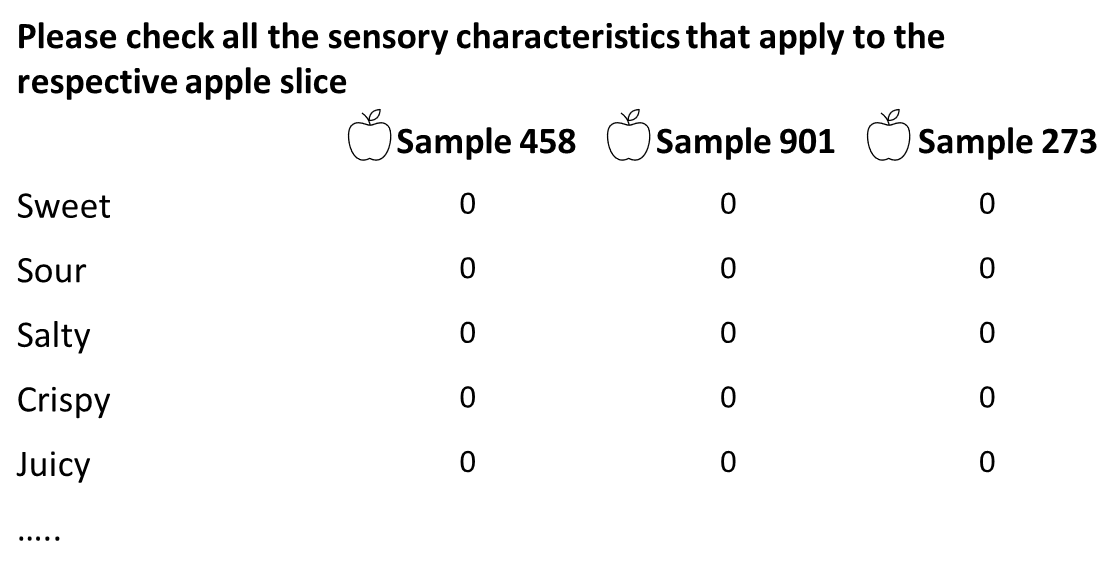Basic Sensory Science
2 A Crucial Difference: Analytical Versus Hedonic Evaluation
An important dogma in sensory science is the difference between analytical and hedonic evaluation. Analytical testing refers to the objective perception of the intensity or the presence of a sensation, while hedonic testing refers to the subjective evaluation of a sensation — for example, liking or palatability. This difference is critical when talking about differences in perception and liking.
These concepts are often used interchangeably; however, they have distinctly different meanings. One may perceive something as extremely sweet, but that does not necessarily mean that it is very much liked. This is perhaps even clearer when we think about bitterness: a highly perceived bitterness is often not liked very much.
Especially if you are interpreting data or designing your own sensory research, it is critical to think about this. What is being measured? If you are interpreting data: did people evaluate the food analytically, or did they give their hedonic evaluation? And when you set up your own research: do you want to know how food is perceived, or whether it is liked or preferred over other foods?
The crucial difference between analytical and hedonic evaluation decides the formulation of your question and the method you will choose in your research.
Watch Video 1 to learn more about the concepts of analytical perception and hedonic judgement, and why it is so important to distinguish between the two. In Table 1, you will find a summary of the most crucial differences between analytical perception and hedonic judgement.
Video 1. The difference between analytical perception and hedonic judgement explained.
Table 1. Analytical vs Hedonic testing
| Analytical: How sweet? | Hedonic: How pleasant is this sweetness? |
| Perceived | Judged |
| Perception | Preference |
| Intensity/presence | Opinion |
| Small between-subject variation | Large between-subject variation |
| Very experimental | Closer to “real life” |
| A small sample size needed | A large sample size needed |
Linking analytical and hedonic information
An often-made mistake is the assumption that differences in hedonic attributes (such as liking or acceptance of a product) are due to the scoring of analytical characteristics within the same test. For example, consider the results of sensory testing for two chocolate bars in Table 2. The results can be described as follows: Chocolate bar 1 had a higher rating for liking and sweetness, and a lower rating for hardness, compared to Chocolate bar 2.
What cannot be concluded is that the lower liking of chocolate bar 2 is due to the lower sweetness and the higher hardness. The presence of an attribute and the hedonic evaluation do not necessarily have a linear (causal) relationship: a low sweet taste can be judged as unpleasant, but so can a high sweet taste.
Table 2. Mean sweetness, hardness and liking rating for two chocolate bars.
| Attribute | Chocolate bar 1 | Chocolate bar 2 |
| sweetness* | 84 | 61 |
| hardness* | 34 | 59 |
| liking** | 7.3 | 6.1 |
* Measured on a 100 VAS scale ranging from not present at all to very much present.
** Liking measured on a scale from 1-10, using the Dutch grading system, where 1 stands for the lowest liking and 10 for the highest liking.
It is good to realise that the order in which questions are asked is important. Generally, hedonic judgement is asked before analytical questions to get a better unbiased judgement. If analytical attributes are asked first, one may base their hedonic evaluation on a sum of the answers to the analytical attributes, and not on their first judgement.
When setting up a sensory test that combines analytical and hedonic questions, thought should be put into what the most important outcome of the test is, and through what order of testing that can best be achieved. In Example 1 we discuss the CATA method in which the analytical attributes are questioned before hedonic evaluation.
Example 1 – CATA
In some tests, analytical questions can be combined with hedonic questions. One example of this is in the ‘Check All That Apply (CATA)’ test. This test is widely used in the industry, as both untrained consumers and trained panelists can use it.
The first task is to check all the sensory characteristics that apply to a product. Sensory characteristics are chosen based on the associations that consumers might have with the product. When tasting the samples, consumers are asked to check all the characteristics they find applicable to the sample. An example of such a test is shown in Figure 1.

The result of this test shows how many consumers use each term to describe the product. From these frequencies, the relevance of each characteristic for the test products can be measured. This test is often followed by a hedonic question, asking consumers how much they liked each of the products, or which product they liked most.
Combining the analytical CATA test with a hedonic question allows linking sensory attributes with consumer acceptance. For example, it can show which attributes are most strongly associated with higher or lower liking scores.
As mentioned before, the order of the tests can influence the results. This has been the topic of an ongoing debate in the case of CATA. Administering the CATA test before the hedonic question results in enhanced product differentiation and requires fewer consumers [1]. On the other hand, it is argued that participants might be influenced by their ratings on the attributes during the analytical test, which could give a biased hedonic rating.
- Geffroy, O., Maza, E., Lytra, G., & Chervin, C. (2024). ‘Liking then CATA’or ‘CATA then liking’? Impact of the hedonic question positioning on the wine sensory description and appreciation. OENO One, 58(3). ↵
Analytical testing refers to the objective measurement of the intensity of a sensation
hedonic testing refers to the subjective evaluation of a sensation, for example, liking or palatability.